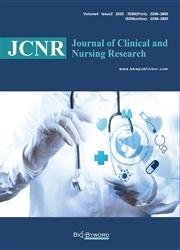Risk Factors of Neonatal Medical Adhesive-Related Skin Injury and Management of High-Risk Nodes
引用次数: 0
Abstract
Objective: To analyze the risk factors of neonatal medical adhesive-related skin injury and put forward targeted preventive measures, so as to provide reference for the care and prevention of neonatal medical adhesive-related skin injuries. Methods: Using the convenience sampling method, 262 neonates admitted to the neonatal intensive care unit (NICU) of a tertiary general hospital in Wenzhou from April 2021 to May 2022 were selected as the study subjects. The incidence of medical adhesive-related skin injuries in these neonates was retrospectively analyzed. Results: Among the 262 children, 43 cases had skin injuries, with an incidence rate of 16.4%. Single factor analysis showed that the occurrence of medical adhesive-related skin injury was related to gestational age, weight, electrocardiogram (ECG) monitoring, venous access, ambient temperature, and mechanical ventilation (P < 0.05). Multivariate logistic regression showed that gestational age, ECG monitoring, and ambient temperature were independent risk factors of medical adhesive-related skin injury (OR values were 0.700, 0.431, and 6.365, respectively). Conclusion: The high incidence of neonatal medical adhesive-related skin injury may be caused by one or more factors. Clinical measures should be taken, such as selecting the appropriate type of adhesive according to gestational age and using skin-protecting membrane, minimizing ECG monitoring, etc., to prevent the occurrence of neonatal medical adhesive-related skin injury.新生儿医用粘合剂性皮肤损伤的危险因素及高危淋巴结的处理
目的:分析新生儿医用胶粘剂相关皮肤损伤的危险因素,提出有针对性的预防措施,为新生儿医用胶粘剂皮肤损伤的护理和预防提供参考。方法:采用方便抽样法,选取2021年4月至2022年5月入住温州市某三级综合医院新生儿重症监护室(NICU)的262名新生儿作为研究对象。回顾性分析了这些新生儿中与医用粘合剂相关的皮肤损伤的发生率。结果:262例儿童中,43例发生皮肤损伤,发生率为16.4%。单因素分析显示,医用粘合剂相关皮肤损伤的发生与胎龄、体重、心电图监测、静脉通路、环境温度和机械通气有关(P<0.05)。多因素logistic回归显示,心电图监测和环境温度是医用粘合剂相关皮肤损伤的独立危险因素(OR值分别为0.700、0.431和6.365)。结论:新生儿医用粘合剂相关皮肤损伤的高发可能是由一个或多个因素引起的。应采取临床措施,如根据孕龄选择合适的粘合剂类型并使用皮肤保护膜、尽量减少心电图监测等,预防新生儿医用粘合剂相关皮肤损伤的发生。
本文章由计算机程序翻译,如有差异,请以英文原文为准。
求助全文
约1分钟内获得全文
求助全文

 求助内容:
求助内容: 应助结果提醒方式:
应助结果提醒方式:


